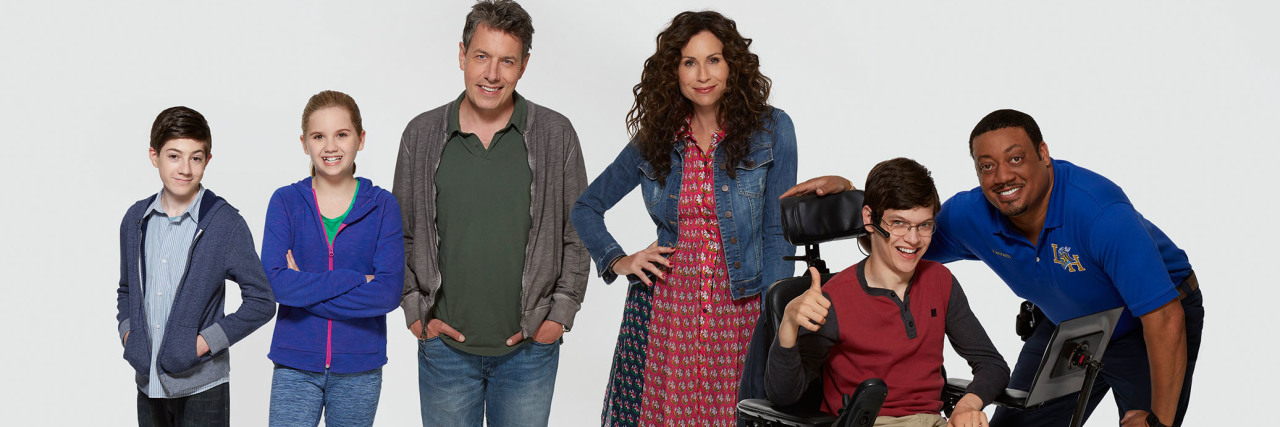A month ago, I spent four-and-a-half hours on a gray couch in the Changing The Face of Beauty studio to film an interview for their new #FaceMyBeauty Couch series. As I wore a blue button down shirt, khaki pants, and a blue blazer, I was grateful for the opportunity to be part of this new Couch video series. This new platform gives me, and others in the disability community, a place to talk about the need for our representation in advertising and in the media in general.
In the opening scene of this video, I talked about how the lack of inclusion in media matters to me because there isn’t understanding in the general public of the disability community. As the founder and host of Special Chronicles, a media platform that gives respect and voice to people with special needs, I am passionate about telling the stories of those of us with disability. This lack of understanding in the media towards those of us with disabilities means that viewers don’t see us. By us not being seen, the mainstream community cannot understand or accept us.
This is a time to celebrate the acceptance and inclusion in the media of those of us with disabilities. It is time to showcase the lives of those with disabilities on media platforms. In the media, whether on film, television, radio, or podcast, those of us with disabilities are rarely seen, and if we are, we are not usually portrayed in a positive light.
Today, however, the inclusion of people with disabilities in the media is beginning to change for the better. The general public is beginning to see the joy and the whole gamut of human experience on the faces of those with disabilities.
A Palos Park-based nonprofit, Changing The Face of Beauty, is the driving force behind the #FaceMyBeauty Couch series. Each month of this year they are giving individuals in the disability community the opportunity to sit on their couch and talk about how the media and advertising worlds can change the face of beauty.
The Couch Series has as its mission to include people with disabilities in advertising and, more generally, in the media. Another enterprise, the ABC sitcom “Speechless,” has as its mission to include the disability community in entertainment television.
The television show Speechless is breaking new ground as being one of the first sitcoms to feature a character and actor diagnosed with cerebral palsy. The show centers around the daily life of the DiMeo family, including Maya (Minnie Driver) and Jimmy (John Ross Bowie) and their three children: JJ (Micah Fowler), Ray (Mason Cook), and Dylan (Kyla Kenedy)— and JJ’s aide Kenneth (Cedric Yarbrough). The character of JJ DiMeo was diagnosed with cerebral palsy and is also nonverbal. JJ communicates with a letter board and has someone else speak for him.
The actor Micah Fowler on the other hand, who plays JJ quite excellently, was diagnosed with cerebral palsy and is verbal. Even though it takes Micah a while to speak, he is still able to communicate for himself. Micah when acting has to use a lot of facial cues and body language to play the character of JJ. I believe Micah should be recognized for the outstanding work he is doing as an actor.
This show is not meant to be an “after school special” but rather a funny and honest television sitcom show. Micah Fowler’s family, and others in the disability community, do consult on the television show to make sure that there is a realistic portrayal of disability. In many of the episodes, it takes on disability issues but does so in a light, comedic tone.
Many in the disability community can laugh at scenes on “Speechless” while also finding the show autobiographical to their own life. One viewer I spoke to explained that when she talks with her friends, she says this show is “my life in a sitcom.”
“It’s [“Speechless“] so crazy that it’s funny,” said Sarah Kate Sligh, an eighth grade student from Alabama who was diagnosed with cerebral palsy. “But it’s just realistic. I can relate to it.”
Sarah Kate’s mom, Andi of the blog BringingTheSunshine.com, can relate to the character of Maya DiMeo and her “hate list.” There are certain places where Andi will not go because it may not be disability-friendly.
A few weeks ago, the cast and crew of “Speechless” wrapped filming Season One. The Season One finale, episode 23, titled “C-A-CAMP”, will air on the ABC network the beginning of May 2017. During the filming of the finale, Kelsey Fowler, the older sister of Micah Fowler, flew from New York City to Los Angeles to be on set for the filming. She documented Micah on her own YouTube Channel Vlog. Through the many months Micah is filming “Speechless,” he and his sister Kelsey remain really close, despite being across the country from each other.
The Speechless sitcom is an excellent vehicle for more inclusion and accurate inclusion in the mainstream media. Join me by tuning in on Wednesdays at 8:30/7:30c to ABC’s Speechless. Let’s support more inclusion and accurate inclusion in the mainstream media of those of us with disabilities.
This column was originally published in the Bugle Newspapers and on SpecialChronicles.com.
We want to hear your story. Become a Mighty contributor here.

